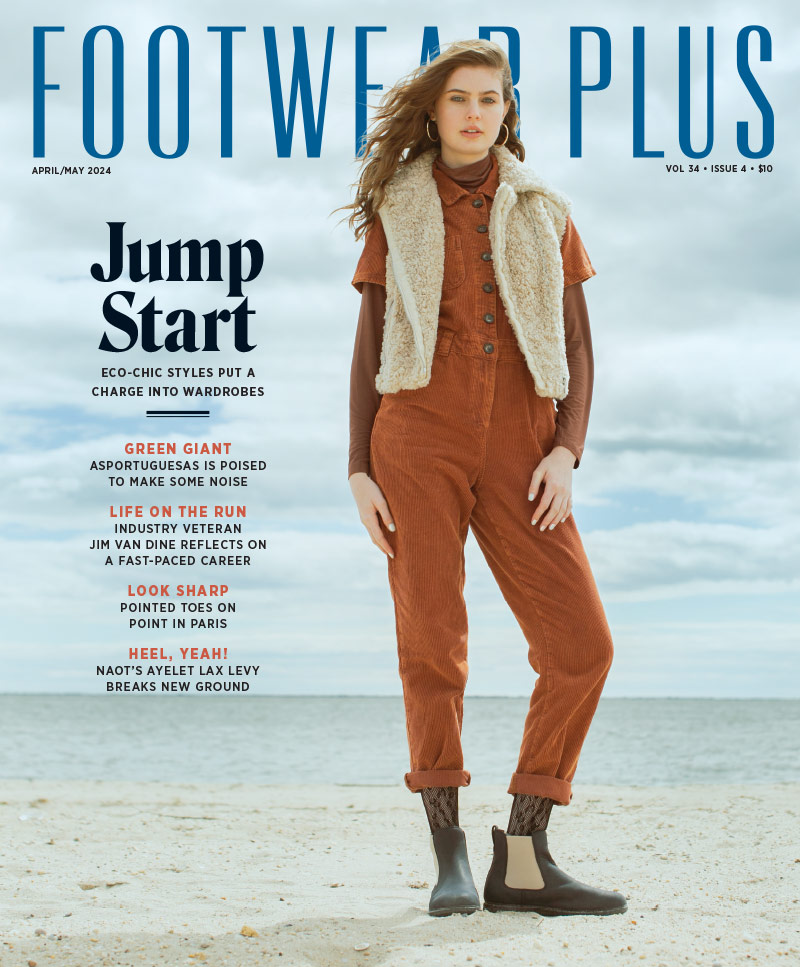You’ve probably seen them: Laughing babies. Dirty dancing wedding parties. Antoine Dodson and his infamous interview-turned song. That blender that attempts to shred anything. Pretty much any cat that ever played the piano or rode a Roomba. Seemingly overnight, these videos were lifted from relative obscurity and went on to ubiquitous Internet fame, acquiring millions of YouTube views and thousands of water cooler conversations. Not surprisingly, companies like Nike, Reebok and Skechers were quick to see the potential, releasing a slew of cool videos in hopes of going viral. Nowadays, the concept is becoming commonplace, but the secret to success is still a bit of a mystery.
“The question is: How do you define success?” asks Josh Lauer, assistant professor of communication at the University of New Hampshire. “You can get lots of hits, but it’s questionable whether that translates into sales ultimately. The Old Spice campaign is doing a good job at getting a lot of positive attention but whether you have customers shifting to that brand and sticking with it over time is an open question.”
However, it’s a question that’s getting somewhat easier to answer, notes Olivier Toubia, an associate professor of business at Columbia Business School, who recently conducted a study with cosmetics company OPI. For the launch of one of the company’s new products, OPI released a coupon in magazines, newspapers and virally online. The redemption rate for the online coupon was 10 times higher than traditional media.
Not surprisingly, viral marketing must be having some quantifiable success, since companies continue to allocate more of their advertising budget to the arena: According to research by PQ Media, the amount spent on word-of-mouth marketing is expected to reach $3 billion by 2013. Want your store to become an online sensation? Here are some top tips from viral marketing pros:
Know Your Goal
“The first step is to decide the objective. Don’t assume it will just work,” Toubia advises, noting “it’s easy for companies to rush into this without thinking it through.” While experts tend to agree that the motivation behind any video should depend on the ultimate objective of each individual company and product, there are two different general approaches: building brand awareness versus advertising a specific product. Each approach has its own benefits and pitfalls, says Toubia. “It’s not a universal recipe. There are so many different ways of doing viral marketing that are relevant for different brands and products.”
Companies looking simply to build brand awareness may have the most success with a viral campaign, says Jackie Mayer, director of marketing for Los Angeles-based Feed Company, a marketing agency responsible for creating and promoting some of last year’s most popular viral videos, including ones for Levi’s, Ford and Skechers. “If the company’s goal is to get the word out and get people talking about their video, it works great. Where companies get in to trouble is [creating] a conversation specifically about a certain product. Viral marketing really works well when the company is really looking to start buzz, to get users watching their video.”
Companies like T-Mobile—with its recent campaigns featuring sudden crowds of people dancing and singing in London’s airports and train stations—have seen a lot of success with this method, says Toni Smith, managing director for The Viral Factory, a London-based digital marketing and media company whose clients include Google and Microsoft. Known as a “flash mob,” the approach is often a fun, whimsical way to utilize surprise by staging events in the public sphere, but it only works if it’s done well, Smith notes. “If you’re going to do a flash mob viral campaign, ensure that it is immaculately produced and big enough to create a lot of noise, at the time and later online. Also, due to the current popularity of campaigns like this, make it different than those that have been done already to attract attention.”
Flash mobs aren’t the only way to generate buzz, of course. Reebok recently garnered quite a bit of attention for the launch of its ZigTech collection by “leaking” a set of viral videos featuring MMA fighter Chuck Liddell, NFL star Chad Ochocinco and actor Dax Shepard training in the nude except for ZigTech sneakers. “If you can capture the attention of your consumer, you can build your brand,” explains John Lynch, Reebok’s head of U.S. marketing and merchandising, on the brand’s motivation for the videos. “We think viral offers a creative platform to do more with our brand, and especially with the target consumer we are looking to hit, this is the perfect way to do it.”
On the other hand, advertising a specific product may be the way to go if a company has a truly unique item that can be promoted in an innovative way, notes Jonah Berger, an assistant professor of marketing at Wharton, University of Pennsylvania’s business school. “There are a number of brands that have used the space well, but those that have used it particularly well do something interesting that relates to the brand itself,” he says, pointing to the famed 2006 Blendtec “Will it Blend?” videos, featuring the company president shredding golf balls, marbles and cans of soda in his blender. Combined with a road show advertising campaign, the videos helped the company’s sales spike 700 percent, says Blendtec Marketing Director Julie Owens. Berger points to Vibram’s FiveFingers as a footwear product perfect for the viral marketing arena since their distinctive design means you can easily see people wearing the product and often gets people talking.
Create a Conversation
Simply posting a clever video on YouTube isn’t the road to success anymore, Lauer cautions. “I can tell you that now the novelty is wearing off and ad execs are starting to think about how you can make it something that’s longer lasting and that cultivates a relationship over time, rather than just generating a spike of hits.” This was the approach Fila took when it launched several viral marketing campaigns this year, says Lauren Mallon, senior global marketing manager. The brand recently co-sponsored a match between tennis Grand Slam Champions Kim Clijsters and Svetlana Kuznetsova, playing Raquet Sports on Nintendo Wii. The event streamed live on Fila’s website, while the company tweeted back and forth with watchers and later had the athletes answer questions submitted via Facebook and Twitter. “It’s [about] building a relationship with our customers and really creating a community online—making ourselves relevant, fun and really interesting,” Mallon explains. The brand also combined video with social media for the launch of its women’s body toning apparel collection, by casting its “real women” spokesmodels in an Internet video campaign featuring celebrity judges. The videos were supplemented with Facebook pages for each of the women, and the women were given a flip camera to record themselves wearing Fila in their daily lives—videos which were later posted on Facebook and Fila’s website. “We’ve created a community of people who are fans of these women and this collection,” Mallon says of the campaign’s success.
Of course, “these things work in both directions,” notes Lauer. “An ad campaign that doesn’t work very well can generate negative buzz on blogs. It’s tricky and it can be a dangerous game,” he warns. Lynch at Reebok agrees: “The pitfall is if you don’t execute a properly entertaining video or one that is overly commercialized, it can lead to backlash against the brand. Social media is a double-edged sword—you have to realize that you lose some control over where it is posted, how it is shared and what the comments are about your work.”
Keep It Real
“It has to seem authentic,” advises Lauer on the secrets of a successful viral video. “If it seems not to have authenticity, it’s a problem for viewers. If it smells of a corporate product being hyped, people will turn away. A lot of videos that go viral are promoted in some way, but it has to be done in a very quiet, sophisticated way.”
Therein lies the catch 22 for many retailers and brands looking to advertise online: Viewers have caught on to the fact that brands are using clever videos to capture their attention, and they may feel “deceived” when they realize a video has a corporate message. On the other hand, how are companies supposed to garner attention without any mention of their brand or product?
The key is “being honest,” Mayer says. “There are ways to creatively include the brand later on, without feeling like you’re deceiving users or their fans.” And in terms of branding, less is more, she advises. “There are ways you can incorporate your branding or message, but it doesn’t have to be thrown at the user.” She points to the company’s Skechers videos featuring Joe Montana as a good example, since the Skechers logo was left out for most of the campaign.
Mayer also says popularity can also be ensured by something “as simple as having a positive message” and Berger advises that “emotional things are more likely to be shared.” But there’s also something to be said for pure old-fashioned entertainment, notes Owens on Blendtec’s amazing online success: “Even if you get the word out, you have to have the people to pass it on. And if the people like it, they pass it on. And if they don’t like it, they just pass.” —Audrey Goodson




